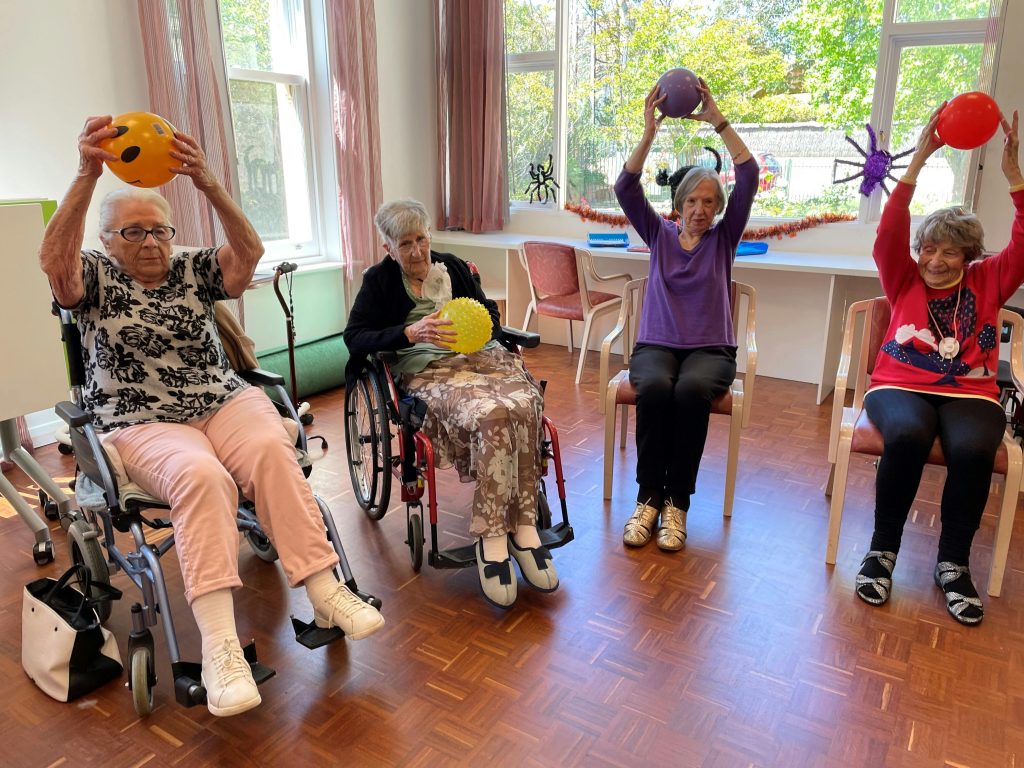Success is not merely a subjective notion but a quantifiable achievement that demands a comprehensive understanding of Key Performance Indicators (KPIs). This guide explores the essential KPIs crucial for measuring success in senior care marketing, offering a detailed roadmap for facilities to not only gauge their performance but also outrank competitors on search engines like Google.
I. Introduction
As senior care facilities navigate the competitive terrain of digital marketing, the ability to measure success becomes paramount. Understanding the significance of KPIs lays the foundation for strategic decision-making, resource allocation, and the overall efficacy of marketing efforts.
A. The Role of KPIs in Senior Care Marketing
- Strategic Insights: KPIs provide actionable insights into the effectiveness of marketing strategies.
- Data-Driven Decisions: Informed decision-making based on measurable outcomes leads to continuous improvement.
- Competitive Edge: Outranking competitors necessitates a keen understanding of what metrics matter most.
II. Building a MECE Framework for KPIs
A. Mutually Exclusive Categories of KPIs
Marketing Performance
| KPI | Description |
|---|---|
| Conversion Rate | Measure the percentage of website visitors converting into leads or inquiries. |
| Click-Through Rate | Evaluate the rate at which users click on online ads, emails, or call-to-action buttons. |
| Cost per Acquisition (CPA) | Determine the cost incurred for acquiring a new resident or lead through marketing efforts. |
Online Presence
| KPI | Description |
|---|---|
| Organic Search Traffic | Assess the number of visitors reaching the website through organic search results. |
| Social Media Engagement | Measure likes, shares, and comments on social media platforms to gauge audience interaction. |
| Online Reviews and Ratings | Monitor the facility’s online reputation through reviews and ratings on platforms like Google and Yelp. |
B. Collectively Exhaustive Metrics
Resident-Centric Metrics
| KPI | Description |
|---|---|
| Resident Satisfaction Surveys | Implement surveys to gauge resident and family satisfaction levels. |
| Retention Rate | Track the percentage of residents who choose to stay after an initial term. |
| Referral Rate | Measure the number of new residents acquired through resident or family referrals. |
Financial Performance
| KPI | Description |
|---|---|
| Return on Investment (ROI) | Calculate the profitability of marketing campaigns by comparing the cost to the revenue generated. |
| Monthly Revenue Growth | Evaluate the month-over-month growth in revenue attributed to marketing efforts. |
| Marketing Budget Allocation | Assess the allocation of marketing budget across various channels for optimal resource utilization. |
III. Marketing Performance Metrics
A. Conversion Rate
The conversion rate is a fundamental metric that assesses the effectiveness of turning website visitors into actionable leads. By calculating the percentage of users who take the desired action, whether it’s filling out a contact form or scheduling a tour, facilities can evaluate the performance of their website in terms of lead generation.
- Formula: Conversion Rate = (Number of Conversions / Total Website Visitors) * 100
- Benchmark: A competitive conversion rate varies but generally falls within the range of 2-5%.
B. Click-Through Rate (CTR)
Click-Through Rate measures the efficiency of digital advertising and the resonance of call-to-action elements. It’s a vital metric for assessing the relevance and appeal of marketing messages across various online platforms.
- Formula: CTR = (Number of Clicks / Number of Impressions) * 100
- Benchmark: A healthy CTR varies by industry but typically ranges from 1-3%.
C. Cost per Acquisition (CPA)
Cost per Acquisition provides insights into the financial efficiency of acquiring new residents or leads through marketing efforts. This metric helps facilities optimize their spending to achieve the desired results.
- Formula: CPA = Total Cost of Marketing Campaign / Number of Conversions
- Benchmark: CPA benchmarks depend on the industry and channel but commonly range from $50-$200.
IV. Online Presence Metrics
A. Organic Search Traffic
Organic Search Traffic is a foundational metric that measures the volume of website visitors who discover the facility through non-paid search engine results. A robust organic presence is indicative of effective SEO strategies.
- Google Analytics Insights: Analyze data on top-performing keywords, landing pages, and user behavior.
- Conversion Attribution: Attribute conversions to specific organic search terms to understand their impact.
B. Social Media Engagement
Social Media Engagement metrics encompass likes, shares, comments, and overall interaction with the facility’s content on platforms like Facebook, Instagram, and LinkedIn. A vibrant online community fosters trust and connection.
- Social Listening: Monitor and respond to feedback, questions, and sentiments expressed by the audience.
- Content Optimization: Adjust content strategies based on the type of posts garnering the highest engagement.
C. Online Reviews and Ratings
Online Reviews and Ratings on platforms such as Google, Yelp, and specialized senior care directories directly influence the facility’s online reputation. Managing and optimizing these reviews is crucial for attracting new residents.
- Review Response Strategy: Develop a proactive approach to respond to both positive and negative reviews.
- Improvement Implementation: Use constructive feedback to enhance services and address areas of concern.
V. Resident-Centric Metrics
A. Resident Satisfaction Surveys
Resident Satisfaction Surveys are invaluable tools for gauging the overall happiness and contentment of residents. Implementing regular surveys allows facilities to address concerns promptly and enhance the quality of care.
- Survey Frequency: Conduct surveys on a regular basis to capture evolving sentiments and preferences.
- Anonymity Assurance: Encourage honest feedback by ensuring residents’ anonymity in survey responses.
B. Retention Rate
The Retention Rate measures the percentage of residents who choose to stay at the facility after their initial term. A high retention rate signifies resident satisfaction and a positive living experience.
- Formula: Retention Rate = ((Number of Residents at End of Term – New Admissions) / Number of Residents at Start of Term) * 100
- Benchmark: A healthy retention rate typically exceeds 85%.
C. Referral Rate
The Referral Rate quantifies the number of new residents acquired through resident or family referrals. Leveraging satisfied residents as advocates contributes to organic growth.
- Formula: Referral Rate = (Number of New Residents from Referrals / Total Number of New Residents) * 100
- Incentivization Strategies: Introduce referral programs and incentives for residents who refer new individuals.
VI. Financial Performance Metrics
A. Return on Investment (ROI)
Return on Investment evaluates the profitability of marketing campaigns by comparing the cost incurred to the revenue generated. A positive ROI indicates the effectiveness of marketing efforts in driving financial returns.
- Formula: ROI = (Net Revenue from Marketing Campaign – Cost of Campaign) / Cost of Campaign * 100
- Continuous Monitoring: Regularly assess the ROI of different marketing channels to reallocate resources effectively.
B. Monthly Revenue Growth
Monthly Revenue Growth measures the month-over-month increase in revenue attributed to marketing efforts. A positive trend indicates successful marketing strategies contributing to financial growth.
- Formula: Monthly Revenue Growth = ((Revenue in Current Month – Revenue in Previous Month) / Revenue in Previous Month) * 100
- Benchmark: Aim for steady monthly growth, with a target percentage aligned with overall business objectives.
C. Marketing Budget Allocation
Optimal Marketing Budget Allocation ensures efficient resource utilization across various channels. Balancing the budget based on the performance of each channel maximizes returns.
- Data-Driven Decisions: Utilize performance data to identify high-performing channels deserving of increased budget allocation.
- Testing and Experimentation: Allocate a portion of the budget to testing new channels and strategies for diversified marketing.
VII. Conclusion
In conclusion, mastering the art of senior care marketing requires a meticulous understanding of Key Performance Indicators. This guide, structured within a MECE framework, equips senior care facilities with a comprehensive toolkit to measure success effectively. By aligning marketing efforts with resident-centric and financial metrics, facilities can not only gauge their performance but also strategically position themselves to outrank competitors on search engines like Google. Embrace the power of data-driven decision-making to elevate your senior care marketing strategies and ensure sustained success in an ever-evolving landscape.



